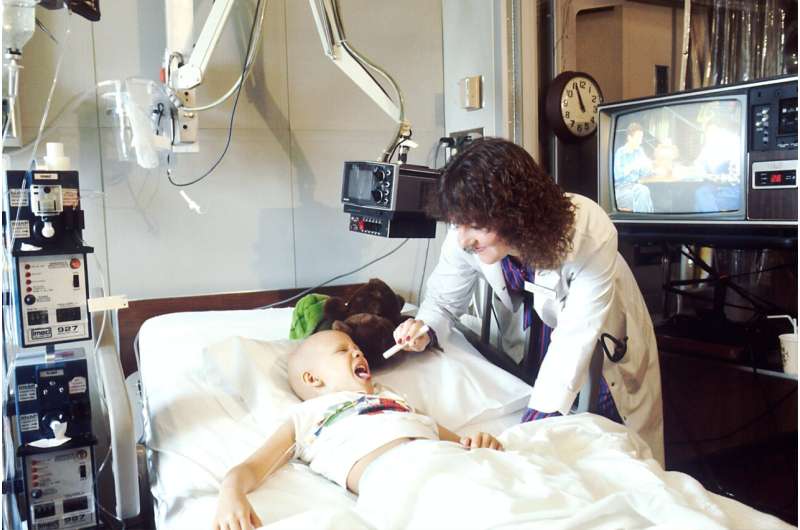This article has been reviewed according to Science X's editorial process and policies. Editors have highlighted the following attributes while ensuring the content's credibility:
fact-checked
trusted source
proofread
For children with cancer, different neighborhoods may produce different outcomes for different races

An analysis from Rutgers may help solve a mystery: Why do Black and Hispanic children suffer more life-threatening complications from cancer and cancer care than white children who get the same treatments at the same facilities?
Researchers combined health and location data and found that the neighborhoods where children live had a bigger impact on outcomes than race and ethnicity alone. Their findings were published in Cancer Nursing.
Correlation between neighborhoods and complications doesn't prove neighborhoods cause complications, but the hypothesis was bolstered by a second observation. The tie between neighborhood and outcome increases with age.
Infants and toddlers who develop cancer fare about the same no matter where they live, the study data showed. Outcomes begin to diverge in grade school and keep on diverging into adolescence as children spend more time outside the house.
"There are many location-related factors that could be a causal factor for complications," said Beth Savage, an assistant professor at the Rutgers School of Nursing and lead author of the study. "To use one example, stress can damage health, and stressors like crime, air and noise pollution or poor-quality housing are more common in economically challenged neighborhoods than rich ones."
The researchers used 2018 medical data from the State Inpatient Databases (SID) of nine states—California, Florida, Maryland, Michigan, New Jersey, North Carolina, Rhode Island, Washington and Wisconsin—all of which included each patient's home zip code. This allowed them to match racial demographics and health outcomes from 24,786 juvenile cancer patients with the Child Opportunity Index 2.0 (COI) rank of each child's home neighborhood.
COI ranks are a composite of 29 measures of neighborhood quality in areas such as education, environment and socioeconomic resources. The average home zip code COI rank for children in the study was 60 for white children, 36 for Hispanic children and 33 for Black children.
Overall, the researchers found evidence of one or more potentially life-threatening complications on the hospital discharge records of 32 percent of white children, 36 percent of Hispanic children and 37 percent of Black children.
However, when researchers looked at how children of different races but similar neighborhoods fared, they found no significant differences between white and Hispanic children and the smallest possible significant difference between white and Black children.
Adjusting for age—and thus for exposure to the neighborhoods outside each child's home—also reduced racial disparities in outcomes. Indeed, there were no significant racial differences in serious complications from cancer and cancer care among children under age 4.
The researchers hope to further this work by comparing health outcomes to individual census tracts, which are much smaller than zip code areas, and by finding other location data that might allow them to figure out what aspects of different neighborhoods might drive higher complication rates.
"The potential culprits are numerous," Savage said. "Until we live in a more just America where all races live in high-opportunity neighborhoods, it is important to know what's driving outcomes in lower-opportunity neighborhoods so we can at least ameliorate those dangers."
More information: Beth Savage et al, Race, Neighborhood Opportunity, and Life-Threatening Complications in Children With Cancer, Cancer Nursing (2023). DOI: 10.1097/NCC.0000000000001201




















